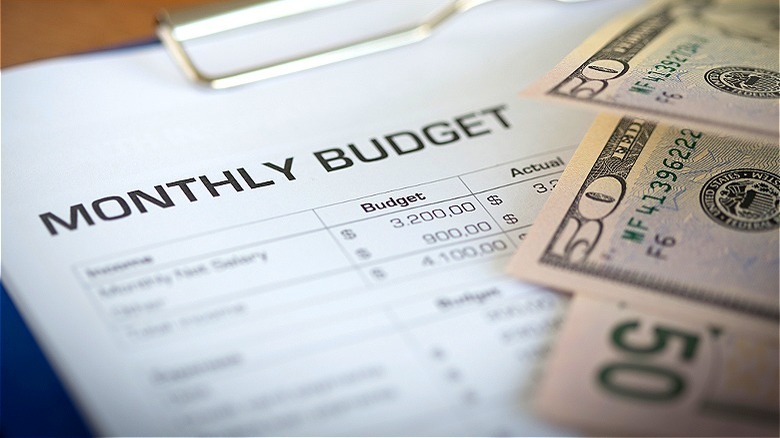What Does It Mean To Be DINKs?
While there seems to always be a new term or phrase for describing households, couples, and/or families, perhaps none are as indicative of changing social views and economic realities as the term DINK. The acronym — which stands for "dual income no kids" — is increasingly popular on social media to describe the rise of professional couples (or duos) without children in their households.
An important thing to keep in mind about DINKs is that they can, and do, span many different age groups and family types. While some DINKs might be young couples who have yet to start a family, others might be established professionals who've actively decided to be child-free. Another group of DINKs are empty nesters re-discovering their disposable income now that their children have left the house. Beyond more traditional couples, DINKs can also be roommates and even adult child-and-parent arrangements.
The main element all of these DINK combinations have in common is the expectation that they'll probably have more disposable income than a household with children. Given the ever-growing cost of raising children in the U.S. and the expenses associated with having one (or more) in the house, a household without kids has decidedly more freedom to focus its income in different ways. This has made DINKs a popular marketing target and subject of corporate focus, especially for things like luxury items, travel, and investment opportunities.
The financials
Kids are expensive. Per Lending Tree, the annual cost of raising a small child increased by 19.3% between 2016 and 2021. According to the same research, it now costs $237,482 to raise a child from birth through age 18. This is due, in large part, to the increase in prices for the essentials necessary for a child, which includes everything from food to clothing to transportation to child care. In fact, researchers found that families paying for child care spent an average of 17.8% of their income on child care costs alone. Of course, certain states and geographic locations in the U.S. can have very different financial implications when it comes to having and raising a child. For instance, families in Nevada spend the most (27.8% of their income) on child care, while families in South Dakota and New Hampshire spend the least (11.6%).
Since people who don't have the expense of children, like DINKs, are generally thought to have far more disposable income, their spending opportunities are fundamentally different. From eating out at restaurants to driving nicer cars to focusing more on their retirement savings, the financial focus of DINK households can vary widely. However, being a DINK household isn't necessarily a guarantee of financial freedom or ensures you have excess disposable income. Between astronomical housing prices and historically stagnant wages, it's still very possible for DINKs to be financially struggling.
Social considerations
While finances are definitely part of a person's decision to have children (or not), shifting societal benchmarks appear to be the biggest factor when it comes to the rise of DINKs. According to a Pew Research Center survey, 56% of adults aged 18 to 49 said they simply didn't want to have kids. The other 43% of respondents had a variety of reasons as to why they were unlikely to have kids, with only 17% citing financial reasons. Medical reasons, meanwhile, were cited by 19% of respondents, which also reflects the changing societal norms of when, exactly, people are having children.
Since millennials are pointed to as the generation contributing to falling birth rates in the U.S., it's impossible to remove the social and economic factors that have pushed millennials to wait until later in their 30s, and even 40s, to have children. From later homeownership rates to stagnant economic opportunities — including low pay and underemployment — millennials often have had too much to worry about to even consider children. By the time many might finally feel ready, and able, to have kids, biology might no longer be on their side. Even so, the rise in first births among older mothers is perhaps an indication of how many people have felt they must delay their decision to have children. According to 2017 data from the Centers for Disease Control and Prevention regarding falling birth rates, the only group consistently having more babies than before in history are those aged 40 and older.


